- No products in the cart.
The Ultimate Guide to Finding the Best Gloves for Your Lab
Oct
22
2020
Gloves have long played important roles in protecting one of human’s most valuable assets, the hand. Modern industrial gloves are made in a variety of materials to safeguard against illness and other working conditions. Gloves also defend manufactured goods from human contamination. Different types of hand protection are needed for various end-use applications. Disposable gloves offer short-term shielding, while thicker gloves provide superior toughness, chemical, and thermal resistance.

Lab Pro specializes in providing critical supplies like gloves to a variety of essential industries, from aerospace to agriculture to education. Our ultimate glove guide will help you select the right tools for the intended application.
More than Just a Garment
Cave paintings indicate that gloves date back to the Ice Age. Ancient Greek art depicts man-made hand coverings for the purpose of defense circa 1500-1600 BC.1
During the Middle Ages, gauntlets were used to keep soldiers from harm during hand-to-hand combat. According to the Encyclopaedica Britannica, gloves started to become trendy in the 14th century, although this form of fashion arose from function.2
The advent of the Industrial Revolution increased worker injury due to lack of personal protective equipment (PPE) and spread of disease. By 1911, U.S. workers compensation laws were legislated, increasing employer interest in employee safety.
These days industrial gloves improve productivity, health, and the quality of finished goods. The uses and needs of gloves are ever evolving, with the modern industrial glove market projected to reach nearly $15 billion market by 2027.
Safety Standards
Commercial and industrial gloves are engineered to specific uses based on thorough research and applications testing. Gloves are tested for dimension, tensile strength and elongation, permeation, puncture, residual powder, leakage, simulated use, heat aging degradation, and/or viral barrier efficacy per pertinent regulatory standards such as ANSI, ASTM, NFPA, and ISO. The American National Standard for Hand Protection Classification ANSI 105-2016 covers performance criteria for hand coverings in the chemical and industrial sectors.
Types of Gloves
- Antistatic or electrostatic discharge gloves inhibit the buildup or discharge of static electricity to prevent ignition of solvents and damage to electrical equipment. They can be made of soft conductive fibers, like nylon and/or polyesters. Some of the industries that use ESD gloves include aerospace, electronics assembly, medical, semiconductor, solar, and photonics.
- Butyl gloves (reusable) offer superior chemical resistance. Butyl is a copolymer made of isobutylene and isoprene. is also impermeable to air. This synthetic rubber is flexible, tough, and impermeable to air. Butyl gloves guard against nitric acid, sulfuric acid, and peroxides.
- Chemical resistant gloves are typically made of chemical resistant barrier laminate, butyl, nitrile rubber, neoprene rubber, polyvinyl chloride (PVC), rubber, or Viton®. Selecting an appropriate glove depends on the type of chemical you will handle. The EPA gives a chemical resistance category selection chart for gloves. *
*NOTE: The EPA Chemical Resistance Category Selection Chart for Gloves should never be placed or referenced on the product label; it is intended for EPA and registrant guidance only.
- Cleanroom gloves (disposable) are designed to prevent contamination from particulates and can be made of latex, nitrile, PVC, or other polymer blends. Lab Pro offers a variety of cleanroom gloves, whether you need pre-bagged, textured, ISO 4 (class 10) or ISO 5 (class 100). Both pharmaceutical and electronics manufacturing (integrated circuits, CRT, LCD, OLED, and micro-LED displays) require the use of cleanroom gloves.
- Cotton inspection gloves are 100% cotton for absorbing oil and perspiration to ensure that industrial products are clean and presentable. They are appropriate for handling art, documents, DVDs, and prints.
- Cut resistant gloves can be made of chainmail or cut-resistant materials like Kevlar® or high-performance polyethylene (HPPE). ANSI/ISEA 105 standards include a scale with 9 levels of cut protection.
- Glove box gloves extend past the shoulder so workers can reach through the box barrier without being exposed to vulnerable or hazardous substances or materials. These high-tech, very tough gloves can be made of butyl, butadyl, nitrile, neoprene, or polypropylene, depending on the properties of what will be handled.

- Heat resistant gloves and mitts are made of Kevlar®, terry knit, and/or carbon fiber. Leather is char resistant to 200°F and can be treated with flame resistant chemicals. Silicone oven mitts can withstand temperatures up to 400°C and are non-slip. The type of thermal resistant glove you need is dependent on the task it needs to tackle.
- Knit work gloves can serve a variety of purposes, from warmth and comfort to cut or slip resistance. They can be made of cotton, nylon, or they can be coated with plastic. They are not designed for chemical exposure.
- Latex gloves (disposable) are made from rubber trees. Due to their elasticity, they are comfortable, fit well, and allow for a high degree of dexterity. They are also economical. However data suggests that about 4% of the world’s population is allergic to latex, with symptoms ranging from dermatitis to anaphylactic shock, and the prevalence rate increases to nearly 10% for those who work in the healthcare industry.3 Latex gloves are not very chemical resistant but are effective barriers to bloodborne pathogens, bleach, and soap.
- Leather work gloves are made in a variety of shapes, sizes, thicknesses, and material combinations to protect against rough work conditions like sharp objects, heat, cold, and sparks.
- Medical gloves (disposable) were historically made of latex, but synthetic versions made of vinyl and nitrile gloves are now available as non-allergic options. The FDA offers guidance on medical gloves, with a warning that powdered gloves can cause illness or injury.
- Neoprene gloves (reusable) can be useful for working with alcohols, alkalis, gasoline, and organic acids. Neoprene is also a synthetic rubber that gives gloves flexibility and toughness.
- Nitrile gloves (disposable) are more expensive than latex, but they offer superior chemical resistance. These great all-purpose gloves offer short-term (because they are thin) splash protection to bleach as well as several solvents, greases, oils, acids, and bases. Note that nitrile gloves are not recommended for phenol, ketone, and nitrogen-containing organic chemicals.
- Nylon gloves are used for aerospace industry, cleanrooms, inspection, electronics assembly, and pharmaceutical work. They are often worn as glove liners under disposable gloves in cleanroom settings. Carbon filament nylon gloves prevent static discharge when handling susceptible electronics.
- Vinyl gloves (disposable) are made from PVC and are less expensive than latex or They are less resistant to chemicals than nitrile or latex gloves, but are resilient to bleach, grease & oils, and are anti-static. They are economical solutions for low-contact or short-term processes.
Industries Served
Aerospace
- Polymer handling: Depending on application, disposable nitrile, cleanroom, chemical resistant, and/or thermal resistant gloves might be appropriate.
Agriculture & Cultivation
- Handling pesticides: The Agricultural Health Study suggests that wearing chemical resistant gloves when applying pesticides may help prevent Parkinson’s disease. Unlined nitrile, PVC, butyl, and liquid-proof gloves that cover the forearm provide the most protection when working with pesticides.4,5 Thicker gloves provide enhanced chemical resistance.
- Handling plants: Both latex and nitrile gloves are popular tools for keeping grime, germs, and oils from transferring between people and plants. Thinner gloves allow agriculture and cultivation offer maximum dexterity so that delicate crops and seedling aren’t damaged.
- Tending livestock: PVC gloves are a cost effective for the animal husbandry industry because frequent gloves changes are needed to prevent cross contamination from animal to animal.
- Tractors and equipment: Nitrile gloves offer excellent resistance to break fluid, diesel fuel, and gasoline.
Electronics Manufacturing
- Sensitive components handling: ESD and antistat gloves can help prevent damage to delicate electronics like PCBs.
- Semiconductor manufacturing: ISO certified, single-use cleanroom gloves packaged in poly bags in latex, neoprene, and copolymer vinyl are preferred for the industry. These gloves, unlike examination gloves, are formulated without fillers that can leach and stain. Nitrile and latex glove can be chlorinated and rinsed with deionized water to clear residual particulates and metal traces. Latex offer the most dexterity for working with small parts, but nitrile have more chemical resistance and are more appropriate when ESD is of concern. Co-polymer cleanroom gloves are more cost effective but less flexible and resistant to chemicals.
- Etching and cleaning: Appropriate chemical resistant gloves are needed. Harvard EHS recommends using rubber, butyl, neoprene, or Viton when working with piranha solution.
Facilities Maintenance
- Janitorial: Latex, PVC, or nitrile gloves could be used for light housekeeping, while neoprene might be needed for working with industrial sanitizers.
Oil Extraction
- Extractive oils: Disposable nitrile are popular for working with natural oil extractives, cannabis concentrates, ethanol, and plant matter.
Food Service
- Food handling: Powder-free latex, PVC, and nitrile gloves are appropriate for food prep, unless your state bans latex or you are allergic. PVC gloves, or vinyl, are the most economical choice for short-term contact. Be sure to buy in bulk because frequent changes are needed to prevent cross-contamination.
- High strength solution handling: Heavy duty jobs may require heavy duty neoprene gloves.
Medical and Dental
- Dental exams: Latex or nitrile might be preferred for dental care due to flexibility, fit, and biological resistance.
- Medical/patient care: Exam gloves provide barriers between caregivers and patients. Lab Pro provides a wide array of exam gloves. Chlorinated latex gloves are pH-neutral and easy to don in case double gloving is needed. Textured exam gloves are well-suited for instrument handling. Nitrile exam gloves are non-latex and powder free and provide a higher level of chemical resistance.
- Pharmaceutical, medical device, & biotech manufacturing: ISO certified cleanroom gloves are essential tools for these industries.
Science Education and Teaching
- Labs: Non-allergic nitrile gloves can be good all-purpose protective gloves for all sorts of lab settings. Cleanroom gloves for medical and semiconductor students allow practice of real-world applications under instructor guidance.
Stock up to Stay Safe
In 2020 the COVID pandemic increased demand for gloves worldwide, putting strain on global supply. Many industries are dependent on high quality, industry specific gloves. Keep your production lines running by stocking up with Lab Pro’s wide selection of top-notch gloves for all your hand protection needs.
Note: These chemicals and supplies are meant to be used for research, industrial work, cleaning or disinfecting and should always be stored out of the reach of young children or infants. Gloves should be stored per manufacturer guidance and away from heat, light, dust, sunlight, moisture, and other extreme conditions. Rotate glove stock as needed and inspect for signs of degradation before use.
For over 40 years, Lab Pro Inc. has been committed to delivering the highest quality gloves, chemicals, reagents, and cleaning solutions to medical and biotechnical laboratories worldwide. To learn more, visit the biggest Lab Supply showroom in California, or contact us online or at 888-452-2776.
References
- Le Musée absolu, Phaidon, 10-2012. https://commons.wikimedia.org/wiki/File:Young_boxers_fresco,_Akrotiri,_Greece.jpg Photographer Yann Forget.
- https://www.britannica.com/topic/glove
- Miaozong W., McIntosh, J., Liu, J., Current prevalence rate of latex allergy: Why it remains a problem? J Occup Health. 2016 Mar 20; 58(2): 138–144. Published online 2016 Mar 24. doi: 10.1539/joh.15-0275-RA
- https://cropwatch.unl.edu/2019/reduce-pesticide-exposure-proper-gloves-other-ppe
- Ogg, C.L., Hygnstrom, J.R., Puckett, G.J., Gloves for Handling Pesticides. Nebraska Extension Publications. G1893. Index: Pesticides. March 2020.







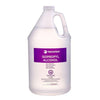

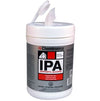
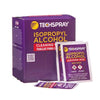

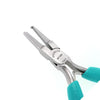
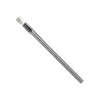
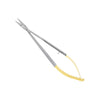
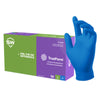

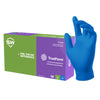



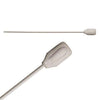
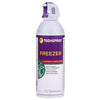
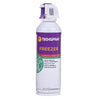
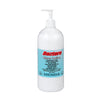


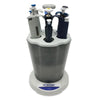




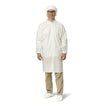


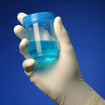






Impressive..! Thanks for the post..